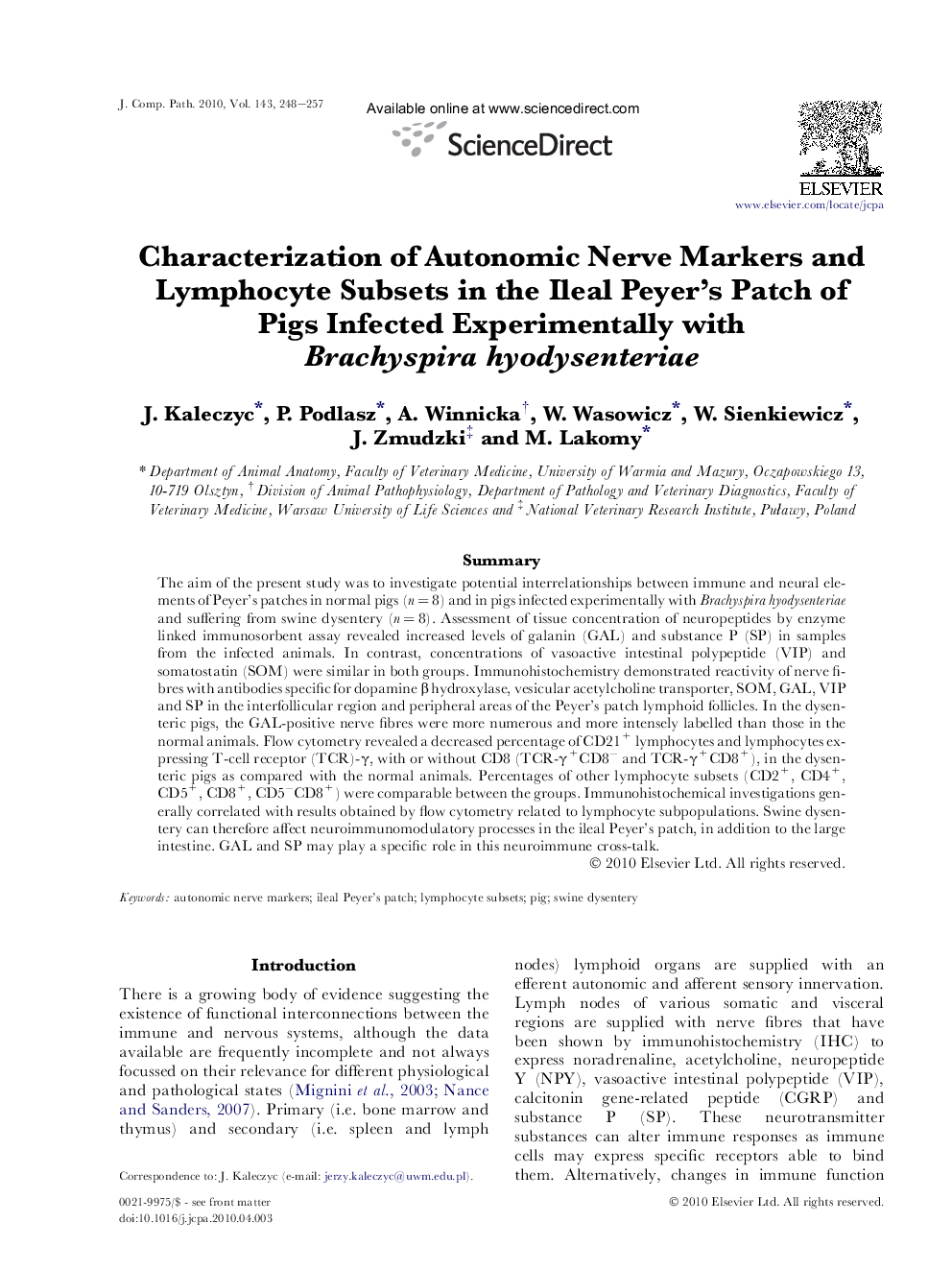| Article ID | Journal | Published Year | Pages | File Type |
|---|---|---|---|---|
| 2437907 | Journal of Comparative Pathology | 2010 | 10 Pages |
SummaryThe aim of the present study was to investigate potential interrelationships between immune and neural elements of Peyer’s patches in normal pigs (n = 8) and in pigs infected experimentally with Brachyspira hyodysenteriae and suffering from swine dysentery (n = 8). Assessment of tissue concentration of neuropeptides by enzyme linked immunosorbent assay revealed increased levels of galanin (GAL) and substance P (SP) in samples from the infected animals. In contrast, concentrations of vasoactive intestinal polypeptide (VIP) and somatostatin (SOM) were similar in both groups. Immunohistochemistry demonstrated reactivity of nerve fibres with antibodies specific for dopamine β hydroxylase, vesicular acetylcholine transporter, SOM, GAL, VIP and SP in the interfollicular region and peripheral areas of the Peyer’s patch lymphoid follicles. In the dysenteric pigs, the GAL-positive nerve fibres were more numerous and more intensely labelled than those in the normal animals. Flow cytometry revealed a decreased percentage of CD21+ lymphocytes and lymphocytes expressing T-cell receptor (TCR)-γ, with or without CD8 (TCR-γ+CD8− and TCR-γ+CD8+), in the dysenteric pigs as compared with the normal animals. Percentages of other lymphocyte subsets (CD2+, CD4+, CD5+, CD8+, CD5−CD8+) were comparable between the groups. Immunohistochemical investigations generally correlated with results obtained by flow cytometry related to lymphocyte subpopulations. Swine dysentery can therefore affect neuroimmunomodulatory processes in the ileal Peyer’s patch, in addition to the large intestine. GAL and SP may play a specific role in this neuroimmune cross-talk.
